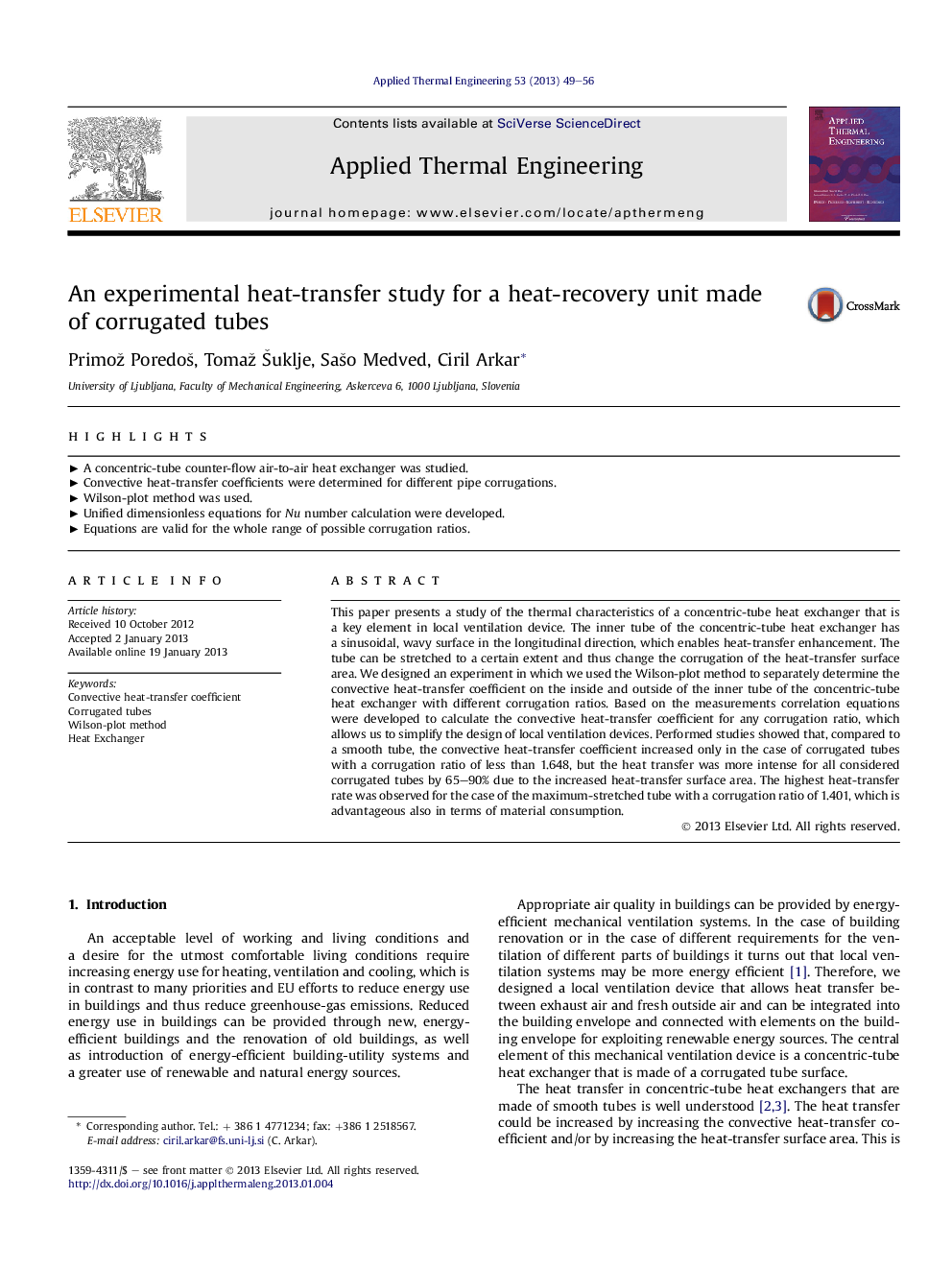| کد مقاله | کد نشریه | سال انتشار | مقاله انگلیسی | نسخه تمام متن |
|---|---|---|---|---|
| 646922 | 884576 | 2013 | 8 صفحه PDF | دانلود رایگان |

This paper presents a study of the thermal characteristics of a concentric-tube heat exchanger that is a key element in local ventilation device. The inner tube of the concentric-tube heat exchanger has a sinusoidal, wavy surface in the longitudinal direction, which enables heat-transfer enhancement. The tube can be stretched to a certain extent and thus change the corrugation of the heat-transfer surface area. We designed an experiment in which we used the Wilson-plot method to separately determine the convective heat-transfer coefficient on the inside and outside of the inner tube of the concentric-tube heat exchanger with different corrugation ratios. Based on the measurements correlation equations were developed to calculate the convective heat-transfer coefficient for any corrugation ratio, which allows us to simplify the design of local ventilation devices. Performed studies showed that, compared to a smooth tube, the convective heat-transfer coefficient increased only in the case of corrugated tubes with a corrugation ratio of less than 1.648, but the heat transfer was more intense for all considered corrugated tubes by 65–90% due to the increased heat-transfer surface area. The highest heat-transfer rate was observed for the case of the maximum-stretched tube with a corrugation ratio of 1.401, which is advantageous also in terms of material consumption.
► A concentric-tube counter-flow air-to-air heat exchanger was studied.
► Convective heat-transfer coefficients were determined for different pipe corrugations.
► Wilson-plot method was used.
► Unified dimensionless equations for Nu number calculation were developed.
► Equations are valid for the whole range of possible corrugation ratios.
Journal: Applied Thermal Engineering - Volume 53, Issue 1, 29 April 2013, Pages 49–56